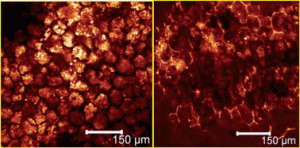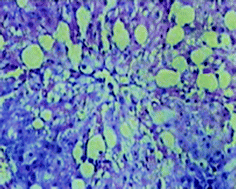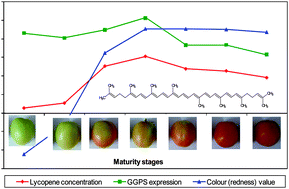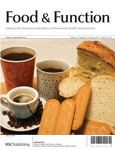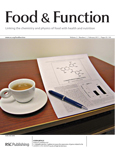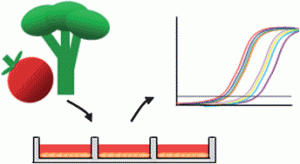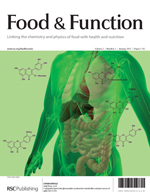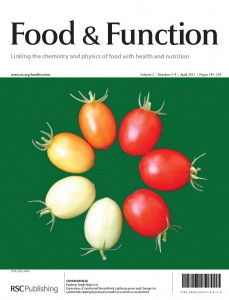 All content in Food & Function is free to access upon a simple registration process so why not sign up now and read the latest issue online.
All content in Food & Function is free to access upon a simple registration process so why not sign up now and read the latest issue online.
The front cover features work from Pradeep Singh Negi and co-workers in India. They show that differential gene expression is responsible for lycopene accumulation in ripening tomatoes. Read the full article by following the link below:
Expression of carotenoid biosynthetic pathway genes and changes in carotenoids during ripening in tomato (Lycopersicon esculentum)
Kanakapura Krishnamurthy Namitha, Surya Narayana Archana and Pradeep Singh Negi
Food Funct., 2011, 2, 168-173
DOI: 10.1039/C0FO00169D
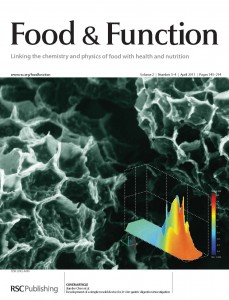 An SEM image showing the hollowed surface microstructure of a peanut particle after gastric digestion is featured on the inside cover. Plant cells are clearly identifiable by the remaining cell walls. Find out more about the development of a simple model device for in vitro gastric digestion by reading this article from Jianshe Chen and co-workers in the UK.
An SEM image showing the hollowed surface microstructure of a peanut particle after gastric digestion is featured on the inside cover. Plant cells are clearly identifiable by the remaining cell walls. Find out more about the development of a simple model device for in vitro gastric digestion by reading this article from Jianshe Chen and co-workers in the UK.
Development of a simple model device for in vitro gastric digestion investigation
Jianshe Chen, Vishwajeet Gaikwad, Melvin Holmes, Brent Murray, Malcolm Povey, Ye Wang and Ying Zhang
Food Funct., 2011, 2, 174-182
DOI: 10.1039/C0FO00159G













